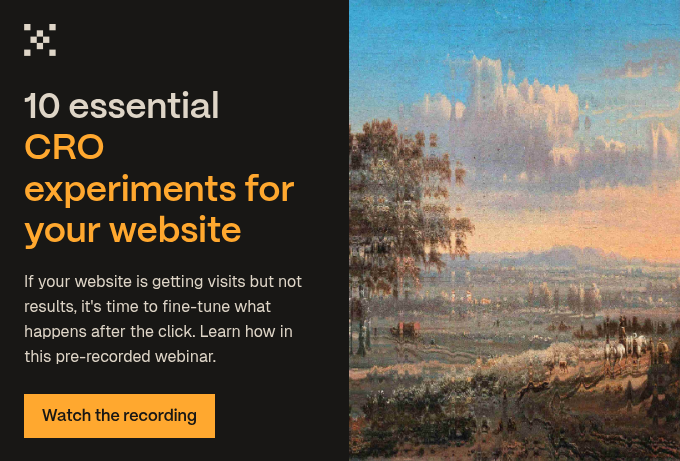We are enthusiastic technophiles, we work remotely and we build our own apps (including Turbine, an HR app and Fizz+Ginger, a technical SEO app for HubSpot users). We work for technology companies including Microsoft, Symantec, LinkedIn and HP and we come from a software development background (our CEO ran a computer games company for ten years).
So you’d expect us to have more of an engineering approach to marketing, even if most of us are ‘creatives’. And, in fact, the agile methodology inspires many of our working practices.
We’re sharing them here to show that marketing people and tech innovators can speak the same language. We believe that you can run marketing as a lean, cost-effective activity AND borrow agile best practices from software engineering to make it work efficiently. Here’s how we see it.
This content was originally available as part of our ebook 'Cost-effective marketing for ambitious B2B companies' (from p.21). As such, you have the option to download the original material as a PDF if you fill in this form:
1. Peer editing
Programmers using the agile method often work in pairs, either coding together or flipping code back and forth between the two of them for peer review. It’s the opposite of the usual image of the heroic programmer burning the midnight oil, but it works. It improves code quality and productivity.
At Articulate, we assign a team to each writing task. Usually, one person will write and a second person will edit. They may go back and forth a few times. Often, we rotate roles on the same campaign for different pieces of copy.
2. Test-driven marketing
With agile development, every change you make to the code is matched by an update to the automated testing software to make sure that changes don’t break what already works.
In marketing, especially online marketing, almost everything is (and should be) testable. Does this page get more conversions than that one? Is this CTA better? And so on. It gives us a clear picture of what’s best for maximising ROI.
But the idea of regression testing also means that what works today needs to be continuously tested to make sure it still works tomorrow.
3. No crunches, no burnout
Agile-minded developers don’t do crunches. There are no caffeine and pizza-fuelled all-nighters. Instead, they plan their work around a manageable but focused 40-hour working week.
Marketers should do the same, even if that means saying ‘no’ to rush jobs. As they say in Texas, ‘lack of planning on your part does not constitute an emergency on my part.’ After all, rushed work is often sloppy work.
Better to gather data and iteratively revise your plans in light of what you learn. We recognise that we can’t get this right all the time, but we endeavour to do so.
4. User stories, not specifications
Agile development doesn’t deal in formal methods, detailed specifications, or any of the other ways project managers try to insulate themselves from client caprice. (See The Devil’s Marketing Dictionary for more.)
Instead, it asks the customer and the developer to collaborate in describing the desired outcome. The format is simple, short user stories – for example: ‘users can create a new account’ or ‘As an X, I want Y because of benefit Z’. The more specific these stories are, the better. Marketers can take a similar approach, specifying outputs, such as the style or topic of an article, rather than inputs such as number of hours it will take to write it. (This is what we do. No time sheets here at Articulate!) Collaboration with our clients is something we really value – it results in better, more valuable output.
Also, our project briefing checklist focuses on business goals and audiences (our word for ‘users’) rather than detailed specifications.
5. Quantify the difficulty, don’t estimate the duration
You probably use Jira or ClickUp or something for project management. These project management tools eschew the usual waterfall methodology and time sheets. Instead of asking developers to specify how long a ‘story’ will take, agile project management tools ask how complex it is and how important it is relative to other tasks.
Over time, they track how long you take to complete different types of tasks, and after a short while they can predict when you will finish different upcoming tasks. At Articulate, for example, we tend to use word length as a proxy for complexity when it comes to content writing, with some caveats for particularly technical pieces. We use points to estimate effort, time, cost and so on.
6. ‘Stand up’ meetings
Instead of interminable status meetings and conference calls, agile developers have ‘stand up’ meetings at the beginning of the week (or day) to share information. We do the same (virtually, we work remotely). And, as the name suggests, if people stand up, they tend not to talk so much!
7. Expect change, don’t fight it
Most software projects involve detailed specifications that are set in stone once the development begins. The problem with such an approach is that circumstances change, and, often, the customer doesn’t know what works for them until they see it in code.
Agile development encourages client involvement and assumes that the project will change over time. By breaking it down into short sprints (see next point) and small, well-defined bullets, an agile project is more flexible.
Generally, we take this approach at Articulate, allowing and expecting clients to give feedback even through multiple revisions. Feedback and rewriting can be frustrating, sure. But expecting them, even embracing them, helps us to do a better job for our clients. Within reason.
8. Sprints, not marathons
Agile development aims for a ‘minimum viable product’ early on, and small incremental improvements over time. It avoids the epic projects and death marches that plagued previous generations of software development.
Marketing projects should be the same: your website is never really finished but it shouldn’t take eons to build. Similarly, your channel marketing outreach is an ongoing project — not a one-off task for an intern.
Marketing agencies, like every other business, can’t afford to be complacent, but innovation is hard. Learning from other fields and translating those lessons to our own business is a smart and cost-effective strategy — and it can be rather rewarding, we’ve found!
So, marketing teams, take heart. You don’t have to be a software engineer or a master Yogi to be agile.






